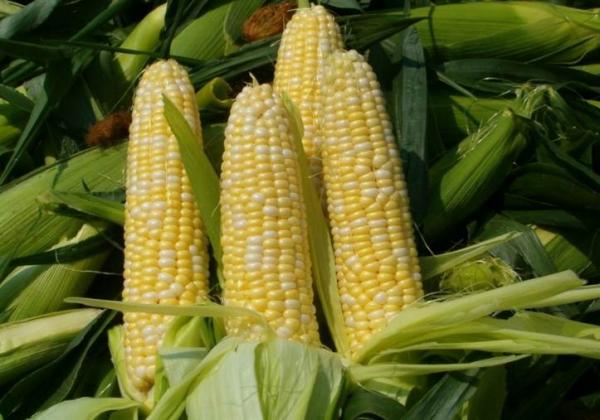The ear of corn, consisting of sun-golden grains, has been unchallenged for centuries. In the number of vitamins, micro and macro elements, it occupies one of the leading positions among cereals, and in importance put it in third place after wheat and rice. What is the history of the origin and distribution of this cereal and what caused love for it throughout the world.
Table of contents
The first mentions and history of development, where the birthplace of cereal
The birthplace of sweet corn is definitely America. Its first descriptions refer to the II-III millennium BC. The ancient Indians used the culture as food in a roasted, boiled form, made flour from it for baking flat cakes, made from germinated grains wines and various syrups. Suffice it to say that the fertility god Tlaloc among the Indians was considered the god of corn. Even then she was a cultivated plant and its wild species are unknown.
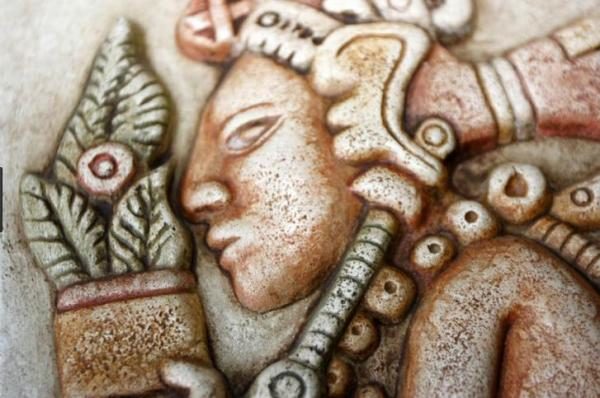
Of course, Columbus first brought Columbus Maize to Europe after Europe discovered America. From Spain and Portugal, the culture spread throughout the Eurasian continent, it began to grow even in Africa. One of the European leaders in growing maize is Ukraine. The Spaniards gave it a sonorous name - "kukuruko", which means "sharp hood".
Appearance of cultivated plants where you can grow

Now corn in more than 60 countries of the world is one of the main cultivated crops. This was due to its ability to perfectly adapt to different climatic conditions and gave rise to an abundance of plant forms and species, as well as its high yield.
Corn (maize) - an annual herb with a strong root, reaching a height of 3 meters. Its stalk is hollow inside, very strong, covered with long leaves, from the nests of which grow ears. Due to its plasticity - ability to adapt and change - indicators of corn fluctuate depending on the places of growth.:
- height - from 80 cm to 6 meters;
- the number of leaves is from 8 to 40;
- cob length - from 4 to 50 cm;
- the weight of one ear is from 30 g to 0.5 kg.
The size and number of grains on the cob also differ.
The benefits of corn grain for the human body
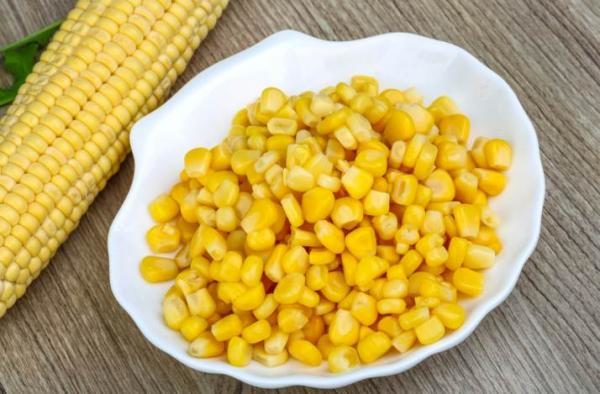
In its chemical composition, this cereal is truly unique - 26 elements of the periodic table, plus a huge amount of vitamins. Golden grains are leading in iron content - 3700 mcg, zinc - 1750 mcg, manganese - 1100 mcg.Potassium, phosphorus, calcium, magnesium, sodium, iodine, gold, selenium, unsaturated fatty acids, mono and disaccharides, ash, a very high content of starch and folic acid (B9), vitamins of group B, PP, C, E - this is not yet a complete list of substances not only useful, but simply indispensable for the human body.
With an average caloric content, the product is able to quickly saturate the body, reduce appetite, therefore it is useful for consumption even with obesity.
Interestingly, canned cereal grains retain all the useful properties and qualities. Most useful when cooked. Tip: always boil the cobs without salt, otherwise the grains will become dry and hard. Due to its unique composition centuries-old culture has a beneficial effect on humans:
- normalizes the activity of the nervous system, helps to overcome stress;
- high content of vitamin B1 provides good health, relieves fatigue, fatigue, irritability, regulates the work of the digestive system - 150g of corn contains a quarter of the daily norm of tyanin (B1);
- Vitamin E gives antioxidant properties, contributes to the prolongation of youth, prevents sclerosis;
improves the cardiovascular system, reduces the risk of cancer; - helps to restore metabolism.
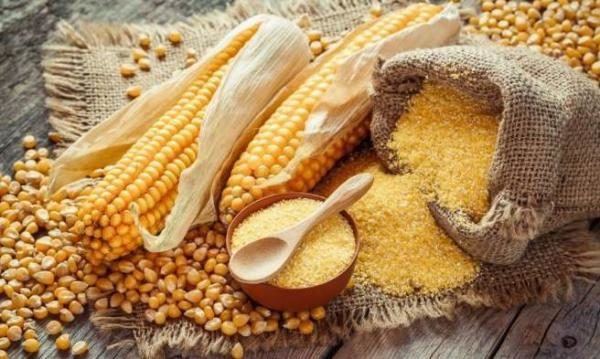
Cornmeal is a versatile product
Application Description
In the first place - it is boiled cob. Both adults and children eat them with great pleasure. Canned corn is used to make salads, dishes. Corn oil is very useful - a strong antioxidant, which is also used for salads, cooking, frying and baking.
By the way, popcorn - fried grains - is even more useful than canned corn, if it is cooked without adding salt, sugar and vegetable oil.
The plant stems have been used in the manufacture of artificial fibers, glue, paper, building materials, packaging, and it is even difficult to list where else.
A decoction of corn silk - the hairs around the cob - is a valuable drug and effectively helps with cholecystitis, hepatitis, kidney stones, diabetes, hypertension, and also has a diuretic effect.And how many do not list scopes, all the same you will forget something.
How to achieve high yields per hectare
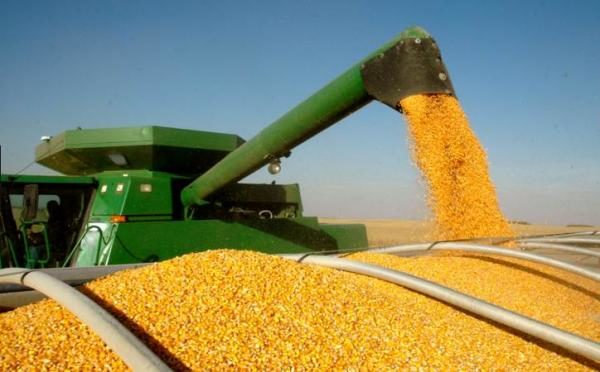
Farmers engaged in the cultivation of this crop, tend to collect as much as possible a crop.
Productivity depends on many factors:
- type of grass, the purpose of planting (grain, silage);
- soil composition, its saturation with oxygen (it is necessary to plow to a depth of 25-30cm);
- weather;
- possibility of watering at least 2 times (some varieties - 3-4 watering).
Under favorable agrotechnical conditions, the most popular varieties in Russia yield high yields:
- Lakomka variety - up to 50 c per hectare;
- Spirit variety - 70ts per hectare.
Good yields give domestic varieties Corsair, Bemo182, Collective 181, Dokuchaevsky. To achieve high yields, it is necessary to fertilize the soil with organic fertilizers (40 tons of manure per hectare), to make mineral substances throughout the growing season. Before planting, be sure to destroy all the weeds, otherwise they will not allow the grain to germinate.Potatoes, legumes, pulses, alfalfa, or clover should be predecessors. At the summer cottage, garden, regular loosening of the soil and timely watering will be effective.
Daily use of 100-150g of sunflower seeds will bring you pleasure and benefit to the whole body.
